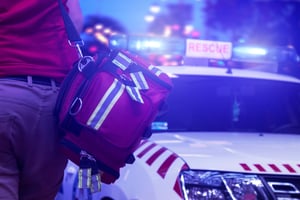The first minute of an emergency is an adrenaline-fueled race against the clock. There’s an emotional rush of panic and anxiety... and now, with that additional pressure, you must execute your crisis communications plan. Imagine the potential difference it can make if your emergency response team and resources (like first responders) are engaged just seconds after an incident is confirmed.
What you do in the first minute of a crisis sets the wheels in motion for the duration of the incident. Mobilizing your emergency response resources and including instructions to your first responders in your communications is crucial to receiving proper backup.
Mobilize your resources:
-Include instructions to your organization’s first responders in your communications
-Contact local law enforcement and fire/rescue to assist in the incident response
-If emergency services can arrive a few minutes sooner, lives can be saved
On-Site
Initiating notification to your on-site emergency responders that an emergency situation is occurring is one thing, but disseminating instructions or calling those individuals to action is more effective and can save crucial time during an actual incident. Sending lockdown procedures, or instructions, that key personnel are to report to their designated posts along with your first notification is much more effective. Consider automating key mobilization steps, such as calling the emergency management team together or initiating a team conference call as a part of your initial response.
The University of Nebraska Medical Center currently puts together scenarios to mobilize their Incident Command team, and make sure that planned actions get done quickly and accurately in the first moments of an emergency. Dispatchers can instruct the team to standby or activate key personnel moments after an emergency is identified. Additional instructions, such as deploying them to their designated areas, are set up to be triggered with a few clicks.
Off-Site
Emergency Managers should also consider sending instructions to off-site resources as a part of your existing response strategy. Compiling contact information for applicable local law enforcement, ambulance, and fire rescue services is fairly standard practice, but many modern Emergency Notification Systems allow you to add these individual organizations as contacts, or add these lists for quick retrieval. Consider using mobile document storage applications to allow your team to access these lists instantly from the field.


